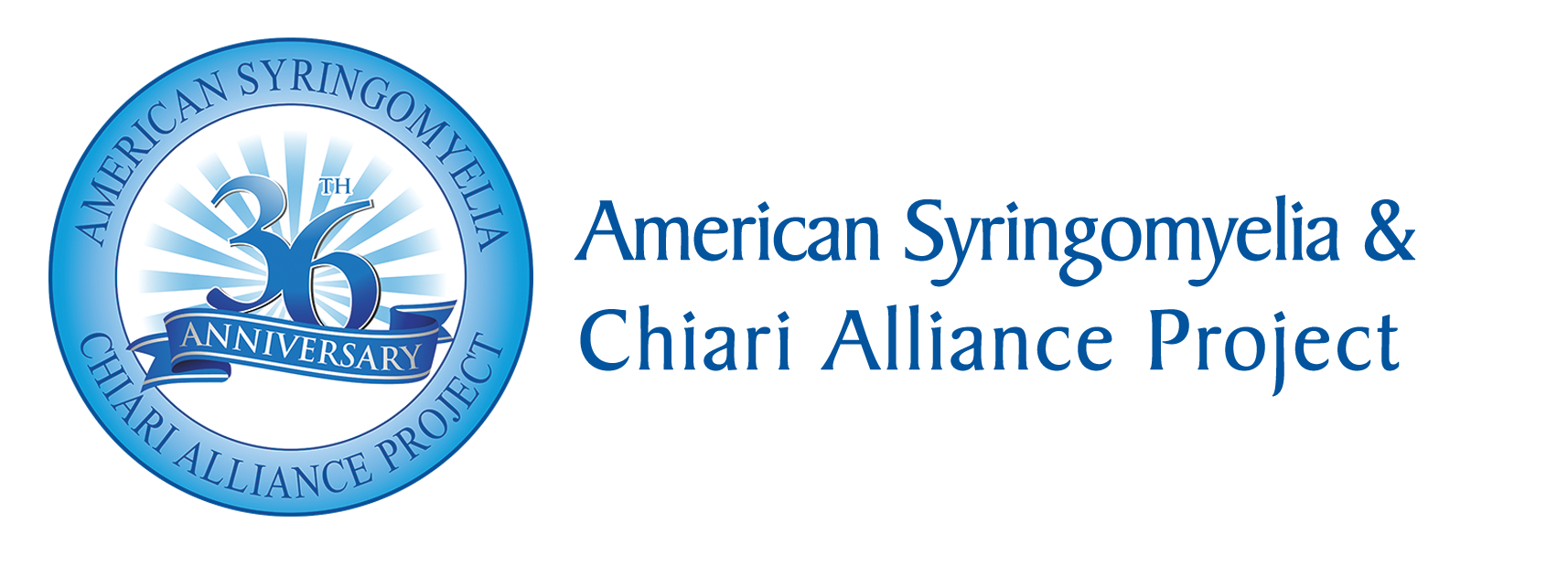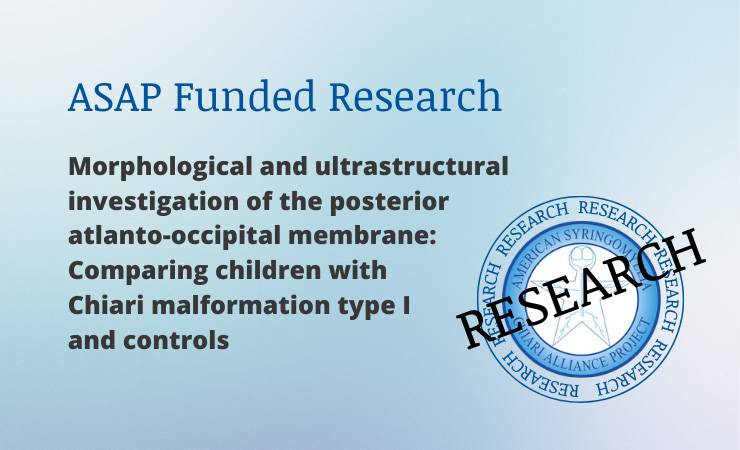ASAP Research Grant Update: Comparing children with Chiari malformation type I and controls
The Medical Advisory Board and Directors of ASAP solicit research grants supporting the treatment and/or contribute to our understanding of the etiology of syringomyelia and its related disorders. See our grant guidelines for more information about funding your research.
Research
Morphological and ultrastructural investigation of the posterior atlanto-occipital membrane: Comparing children with Chiari malformation type I and controls.
Introduction
The fibrous posterior atlanto-occipital membrane (PAOM) at the craniocervical junction is typically removed during decompression surgery for Chiari malformation type I (CM-I); however, its importance and ultrastructural architecture have not been investigated in children. We hypothesized that there are structural differences in the PAOM of patients with CM-I and those without.
Methods
In this prospective study, blinded pathological analysis was performed on PAOM specimens from children who had surgery for CM-I and children who had surgery for posterior fossa tumors (controls). Clinical and radiographic data were collected. Statistical analysis included comparisons between the CM-I and control cohorts and correlations with imaging measures.
Results
A total of 35 children (mean age at surgery 10.7 years; 94.3% white) with viable specimens for valuation were enrolled: 24 with CM-I and 11 controls. There were no statistical demographic differences etween the two cohorts. Four children had a family history of CM-I and five had a syndromic condition. The cohorts had similar measurements of tonsillar descent, syringomyelia, basion to C2, and condylar-to-C2 vertical axis (all p>0.05). The clival-axial angle was lower in patients with CM-I (138.1 vs. 149.3 degrees, p = 0.016). Morphologically, the PAOM demonstrated statistically higher proportions of disorganized architecture in patients with CM-I (75.0% vs. 36.4%, p = 0.012). There were no differences in PAOM fat, elastin, or collagen percentages overall and no differences in imaging or ultrastructural findings between male and female patients. Posterior fossa volume was lower in children with CM-I (163,234 mm3 vs. 218,305 mm3, p<0.001), a difference that persisted after normalizing for patient height (129.9 vs. 160.9, p = 0.028).
Conclusions
In patients with CM-I, the PAOM demonstrates disorganized architecture compared with that of control patients. This likely represents an anatomic adaptation in the presence of CM-I rather than a pathologic contribution.
Read the full study here.
Funding: The American Syringomyelia & Chiari Alliance Project Inc. (ASAP) funded the project for a sum of $19,982.00 as part of the Timothy M. George Fellowship Award to Vijay Ravindra.
Citation: Ravindra VM, Robinson L, Jensen H, Kurudza E, Joyce E, Ludwick A, et al. (2024) Morphological and ultrastructural investigation of the posterior atlanto-occipital membrane: Comparing children with Chiari malformation type I and controls. PLoS ONE 19(1): e0296260. https:// doi.org/10.1371/journal.pone.0296260
Vijay M. RavindraID1,2,3,4*, Lorraina RobinsonID5, Hailey Jensen6 , Elena Kurudza1 , Evan Joyce1 , Allison Ludwick2 , Russell Telford6 , Osama YoussefID7 , Justin RyanID3,4, Robert J. Bollo1,2, Rajiv R. Iyer1,2, John R. W. Kestle1,2, Samuel H. Cheshier1,2,7, Daniel S. Ikeda8 , Qinwen Mao5 , Douglas L. Brockmeyer1,2
1 Department of Neurosurgery, Clinical Neurosciences Center, University of Utah, Salt Lake City, Utah, United States of America, 2 Division of Pediatric Neurosurgery, Primary Children’s Hospital, Salt Lake City, Utah, United States of America, 3 Department of Neurosurgery, University of California San Diego, San Diego, California, United States of America, 4 Division of Pediatric Neurosurgery, Rady Children’s Hospital, San Diego, California, United States of America, 5 Department of Pathology, University of Utah, Salt Lake City, Utah, United States of America, 6 Department of Pediatrics, University of Utah, Data Coordinating Center, Salt Lake City, Utah, United States of America, 7 Huntsman Cancer Institute, Salt Lake City, Utah, United States of America, 8 Walter Reed National Military Medical Center, Bethesda, Maryland, United States of America

